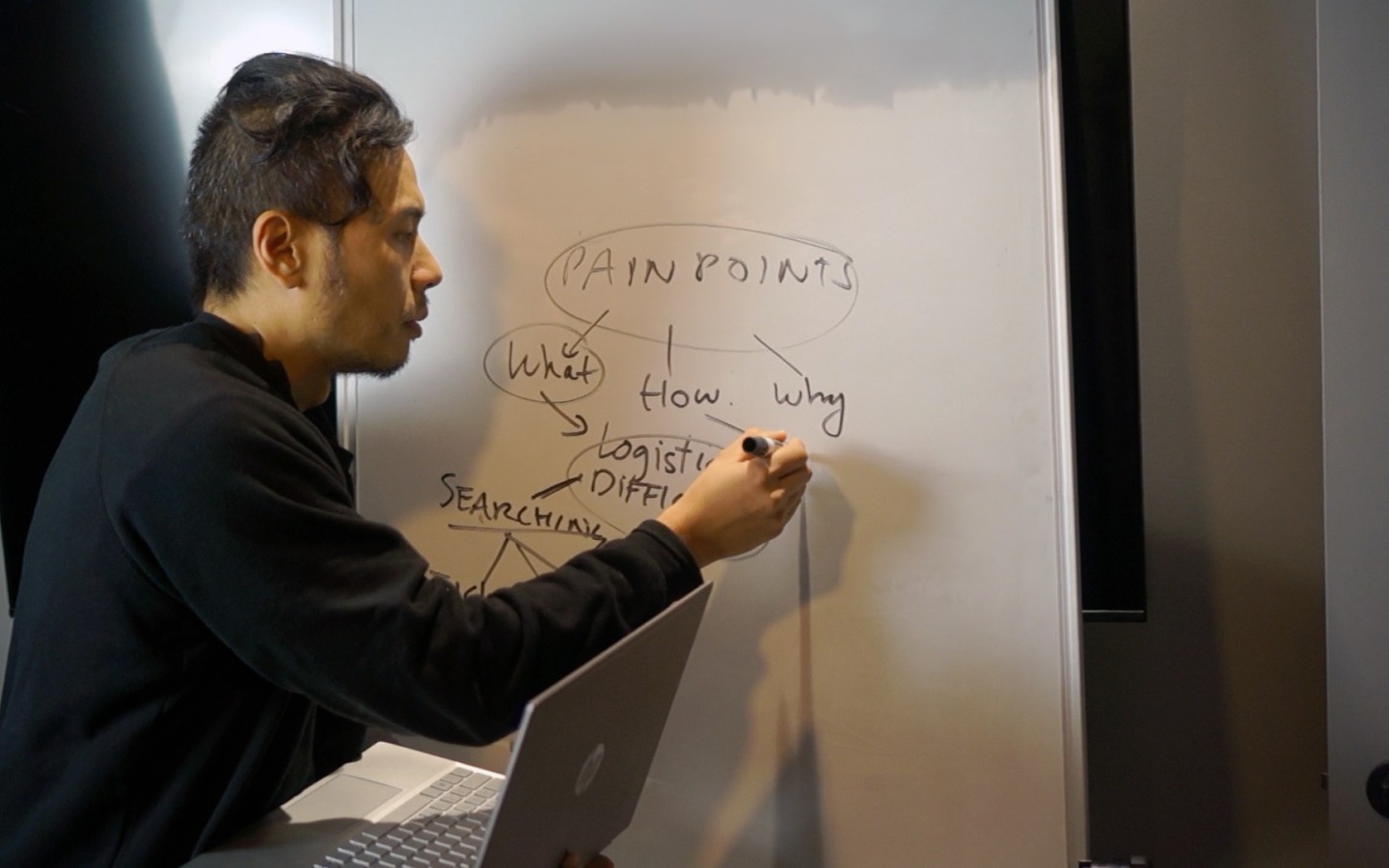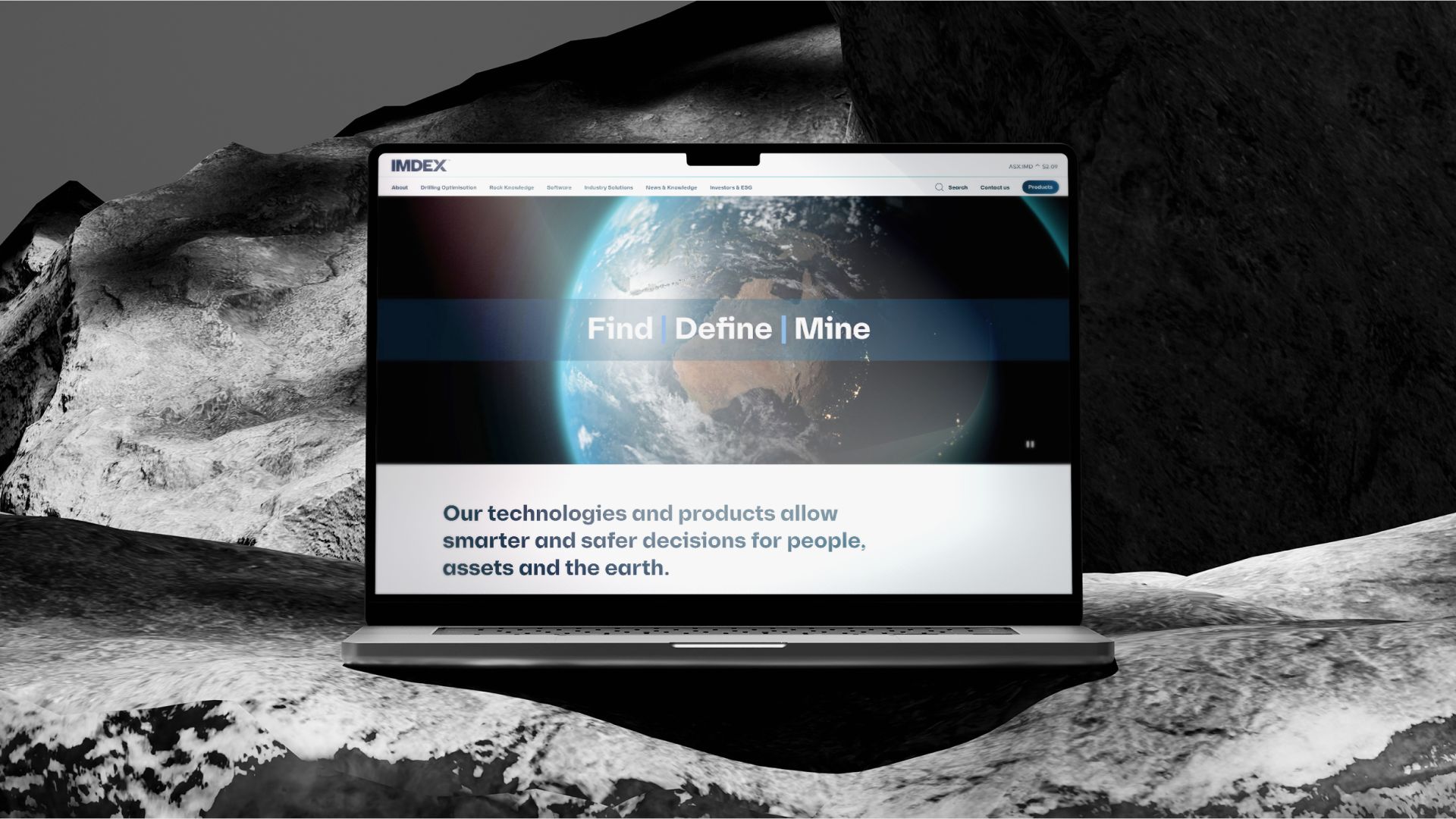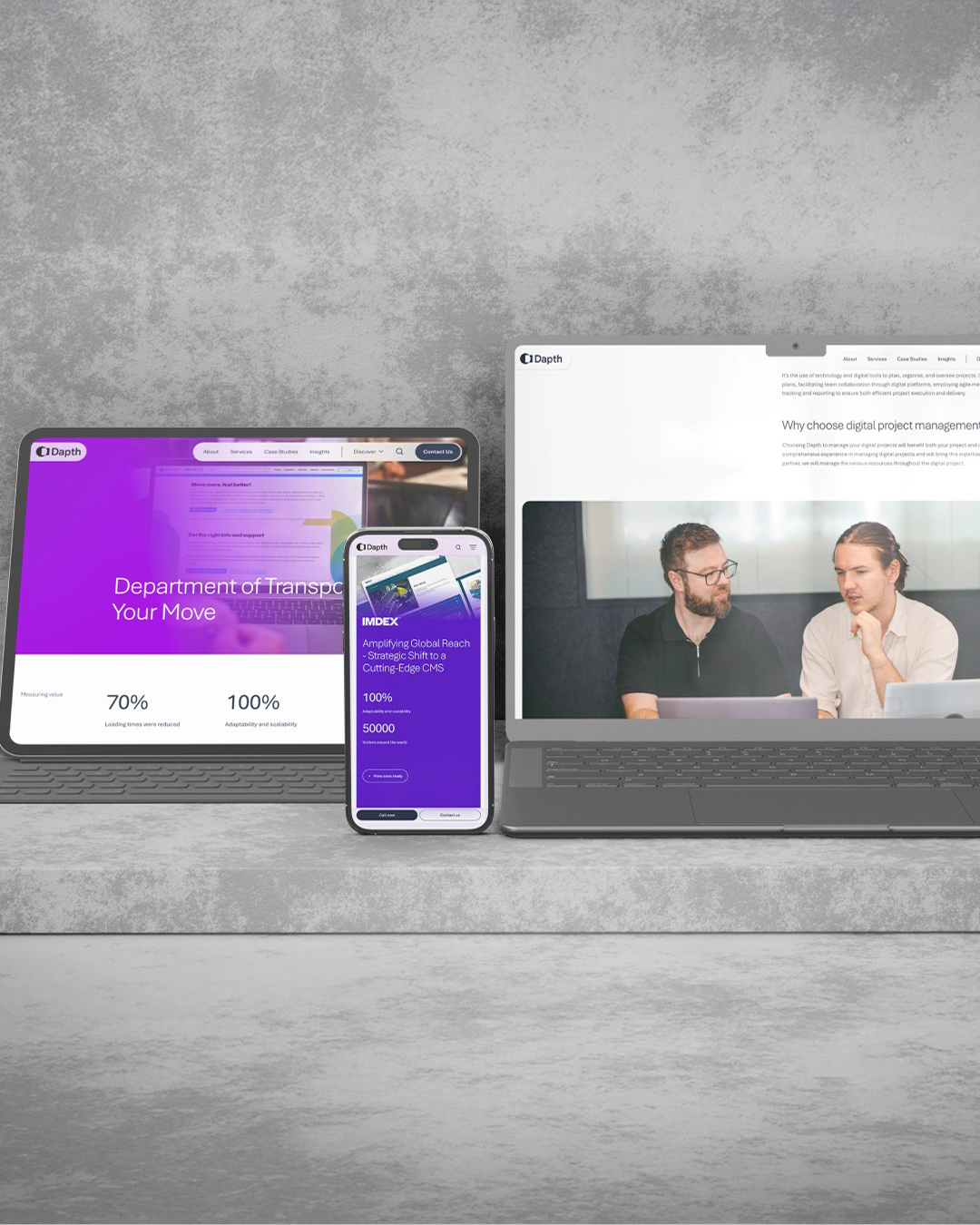
Digital workplace transformation is all about reshaping processes and rethinking the workplace.
You may have heard the term “digital transformation” - but what exactly is digital workplace transformation, and which factors drive it and what are the challenges of digital transformation?
If you need a refresher on digital transformation head to what is digital transformation to learn more about it and how Australian businesses benefit from it.
As a reminder, digital transformation uses digital tech to create new – or modify existing – business processes, culture and CX to meet changing business and market requirements.
Just as digital transformation is rethinking old processes, digital workplace transformation is all about reshaping processes and rethinking the workplace. It's an ongoing process that involves integrating digital technology into the workplace to enhance collaboration, communication, and productivity.
In today’s ever-evolving business landscape, organisations face many challenges, such as:
Automation for people
Process improvement as a service
Integrated digital workplace
The results of a successful digital workforce transformation include:
Cost savings – from downsizing and optimising offices
Improved productivity of team – measured through completed tasks and projects
Top talent recruitment/hiring of top talent – best employees can be recruited for globally dispersed teams as they can be based anywhere
Enhanced digital culture and improved employee experience – people get a higher level of flexibility and tools that are user-friendly
Revenue boost – through an increase in overall agility and productivity

"There is no alternative to digital transformation. Visionary companies will carve out new strategic options for themselves – those that don’t adapt will fail."
Jeff Bezos

Key Drivers of Digital Workplace Transformation
Technological Advancements
Technological advancements are a significant contributor to digital workplace transformation. Innovations in technology play a crucial role in reshaping the way we work. Cutting-edge technology, such as Artificial Intelligence (AI) and collaborative tools, have significantly impacted this process.
Advancements such as AI, automation, and collaborative tools drive digital workplace transformation. This transformation reshapes the modern work environment - impacting everything from collaboration to cybersecurity and document management.
Automation
Artificial Intelligence (AI) can automate repetitive tasks, analyse data to gain actionable insights and provide personalised employee experiences.
Automation is highly beneficial as it streamlines workflows, reduces manual interventions, and improves efficiency across various business processes. With the help of automation tools and platforms, organisations can achieve operational excellence and focus on high-value tasks.
Collaborative Tools
Collaborative tools are essential in fostering communication, collaboration, and knowledge sharing among remote and distributed teams. Team collaboration software, project management tools such as Asana, and options like Zoom (virtual meeting solutions) can facilitate seamless collaboration within the digital workplace.
Technological advancements have had a substantial overarching impact on driving digital workplace transformation. Organisations must embrace and leverage these technologies to stay competitive, enhance employee experiences, and achieve business objectives in the digital era.
Employee Experience and Expectations
Employee experience significantly impacts digital transformation, and workplace strategies are evolving to meet changing employee expectations. It is critical to driving digital transformation because it influences employee engagement, productivity, and retention; when organisations seek to enhance it, they can create a more productive and engaged workforce, which leads to increased innovation and growth.
Employee experience is an essential aspect impacting digital transformation efforts. This includes the role of technology, collaboration, and leadership. Organisations must adapt to their employees' changing expectations and develop more flexible and agile workplaces that support a work-life balance to optimise organisational performance.
To achieve this, it is crucial to put employees first, as they can grow your business through digital transformation.




Flexibility and Remote Work
The COVID-19 pandemic accelerated the demand for flexible work arrangements as people increasingly seek to balance their personal and professional lives, placing a lot of weight on their well-being. In fact, a 2023 report by Randstad found that 83.2% of potential employees consider flexible working hours as essential.
Organisations are leveraging digital tools to facilitate collaboration in dispersed work environments. These tools enable remote employees to communicate and collaborate more effectively, despite being physically located in different places. This is particularly important in the wake of the pandemic, as many organisations have shifted to remote work to maintain business continuity.
The increasing demand for flexible work arrangements and the rise of remote work are trends that are likely to continue. Organisations offering flexible work options and leveraging digital tools to facilitate collaboration are well-positioned to attract and retain top talent.
Data-Driven Decision Making
Data analytics and business intelligence are essential for informed decision-making and shaping strategic directions within a business environment. You can gather, manage, and analyse data to extract valuable insights by leveraging these tools. These insights can then be used to make well-informed decisions contributing to organisational success.
Adopting a data-driven decision-making approach can help you better understand your customers, competitors, and industry trends. This can help you identify new opportunities, optimise your operations, and improve your overall performance. Furthermore, data analytics and business intelligence can help you mitigate risks and make more accurate predictions about future outcomes. By analysing historical data and identifying patterns and trends, you can make more informed decisions based on evidence rather than guesswork.
In summary, data analytics and business intelligence are essential tools for any organisation that wants to make informed decisions based on data-driven insights. By leveraging these tools, you can gain a competitive advantage, improve performance, and achieve strategic goals. A data-driven focus is crucial because it impacts more transparent decision-making and lowers business risk.
Security and Compliance
In today's digital world, cybersecurity and compliance are becoming primary concerns for businesses of all sizes. With the increasing use of technology and the internet, the risk of cyber-attacks and data breaches has also increased significantly. As a result, it has become imperative for companies to implement robust security measures to protect their sensitive data.
These security measures may include firewalls, antivirus software, encryption techniques, and access controls to ensure that only authorised personnel can access sensitive information. Companies may also need to comply with various regulations and standards, depending on their industry and location.
Businesses must take cybersecurity and compliance seriously and prioritise integrating robust security measures to protect sensitive data. This will safeguard their reputation and financial stability and ensure they comply with their industry's legal and regulatory requirements.


Digital Transformation in the Workplace Challenges
Legacy Systems Integration
Many digital transformation problems arise when integrating new digital tools into existing legacy systems, but there are several ways to minimise disruptions to this process and ensure a smooth transition.
Strategies for a Seamless Transition
Integrating new digital tools into existing legacy systems is a complex process that can present several business transformation challenges. These challenges include compatibility issues, data migration, security concerns, and user adoption. Compatibility issues may arise due to the different technologies and platforms used in the legacy systems and the new digital tools.
Data migration is also a significant challenge, as it involves transferring data from the old system to the new one, which can be time-consuming and risky. Security concerns are another challenge, as integrating new digital tools can expose the system to vulnerabilities and cyber threats. Finally, user adoption can be challenging, as users may resist change and prefer to stick with the familiar legacy system.
Importance of Planning
The integration process must be planned carefully to minimise disruptions and achieve a seamless transition. This involves conducting a thorough analysis of the legacy systems and identifying areas for improvement.
It’s essential to involve the end-users in the integration process to ensure that their needs and concerns are addressed. Training and support should be provided to enable the users to adapt to the new digital tools seamlessly. Additionally, it is crucial to test the new system extensively before deploying it to identify and resolve any issues that may arise. With proper planning and execution, integrating new digital tools into existing legacy systems can be done with minimal disruptions and a seamless transition.

Significance of Effective Change Management
Effective change management is crucial to overcome resistance to digital transformation. It increases employee engagement, reduces frustration during operational and technological changes, and ensures employee feedback and time are respected.
This helps minimise the costs and risks of change, optimise project management, and improve the overall project ROI. Exploring methodologies that foster a positive organisational culture during the transformation process is also essential.
There are multiple ways to foster a positive culture, organisation-wide.
Some key ways include:
Build shared values
Invest in diversity within the organisation
Ground your culture in mutual trust
Distribute responsibility where appropriate
Reduce silos
Have a strong hiring/onboarding processes
Skills and Training Gaps
In today's fast-paced technological landscape, many potential skills and training gaps could hinder the successful adoption of new technologies. These gaps may arise from a lack of knowledge or expertise in specific areas or an insufficient understanding of using tools or software. To overcome these challenges to digital transformation, it is essential to prioritise upskilling and continuous learning initiatives.
By upskilling, we mean learning new skills and improving existing ones. There are various ways to upskill, including attending conferences, workshops, webinars, or online courses. One effective strategy to bridge the skills gap could be to organise internal training days, where employees can learn from each other or external experts. This fosters a culture of continuous learning and professional development, enabling individuals to keep up with the ever-evolving technological advancements.
In conclusion, addressing the skills and training gaps that may hinder the successful adoption of new technologies is vital. By prioritising upskilling and continuous learning initiatives, individuals and organisations can stay updated with the latest technology and maintain a competitive edge.
Ensuring Collaboration and Connectivity
Fostering collaboration and connectivity within virtual work environments can be challenging due to various complexities, such as staff loneliness and a sense of disconnect among employees. However, these challenges can be overcome through effective communication and team cohesion focused solutions.
Some critical solutions to ensure collaboration and a sense of connectivity include:
Facilitating more 1:1 time
Fostering a mentorship culture where employees consistently share new learnings and opportunities
Virtual team-building opportunities
Encouraging personal check-ins
Ensuring everyone is aligned with the organisational purpose

The Takeaway
We need to take a holistic approach to embrace the evolving nature of the modern workplace. The digital workplace is necessary for organisations to keep up with the rapidly changing business landscape. It is driven by various factors, such as the need for increased productivity, flexibility, and agility to meet changing customer demands.
However, digital workplace transformation has its challenges. Organisations must navigate issues such as legacy systems, employee resistance to change, and security concerns. To successfully embrace the evolving nature of the modern workplace, organisations must adopt a holistic approach encompassing technology, processes, and people.
This approach must prioritise collaboration, communication, and user experience to ensure that the digital workplace enhances productivity, improves employee satisfaction, and drives business growth.
If you’re interested in developing and implementing a digital transformation strategy, our team can guide you through the process.
Chat to our team to get started.
Frequently Asked Questions
Digital transformation is primarily driven by evolving customer expectations, which demand seamless digital experiences in today's interconnected world. Rapid technological advancements, such as cloud computing and Artificial Intelligence (AI), further accelerate this push, enabling businesses to innovate and adapt to changing market dynamics. Leveraging data insights also plays a crucial role, allowing organisations to make informed decisions, understand customer behaviour, and stay ahead of competitors. Competitive pressures further fuel the need for innovation and differentiation, while agility and flexibility enable businesses to respond swiftly to market changes and seize emerging opportunities. Cost efficiency through automation and optimisation is another critical driver, encouraging organisations to streamline operations and improve productivity in the digital age.
Despite the benefits, digital transformation faces several barriers that hinder its adoption and implementation. Legacy systems and outdated technology infrastructure pose significant challenges, requiring extensive updates or replacements to align with modern digital tools and processes. Resistance to change within organisations and cultural barriers often impede progress and slow digital initiatives. Skill gaps and talent shortages in digital expertise create further roadblocks, making it challenging to leverage new technologies effectively.
A lack of clear digital strategy and vision can stall progress as organisations struggle to define objectives, prioritise initiatives, and allocate resources effectively. Additionally, budget constraints and limited resources pose significant challenges, requiring careful planning and prioritisation to overcome financial barriers and drive successful digital transformation.






_web.webp)































_web.webp)
_web.webp)
_web.webp)

_web.webp)



_web.webp)




























